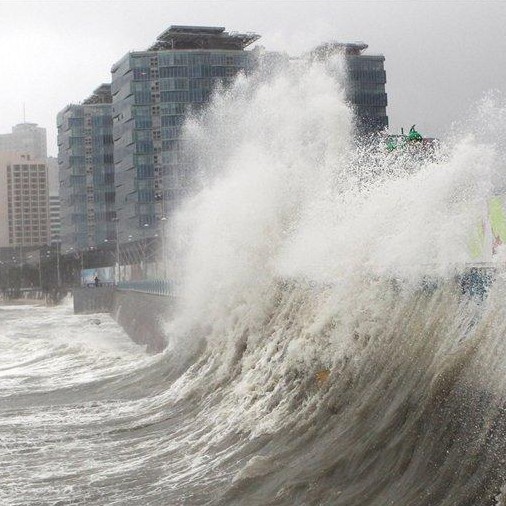SEAWATER EXPOSURE, A CONCRETE NIGHTMARE. OR IS IT?
Several projects in our region are constructed along the sea shore including fancy high rise towers.... Looking and comparing existing structures, one can see the different levels of deterioration in concrete whereby some structures that are only 5 to 10 years old are severely deteriorated versus the ones that are constructed since 1980’s.
Is it because of the Quality? OFCOURSE IT IS. The true question is who and what defines the lack of proper quality?
The project specificationYes, the project specification along with proper implementation and supervision are the key to a durable structure. This main player The Specification has to provide vital information about the requirements and responsibilities which are the core of this article.
Seawater exposure, what more do we need to know?
Seawater is one of the most critical exposures a structure can be subject to. Moreover, its constituents are inconsistent throughout the world whereby it is less diluted in some areas than in others. So any structure depending on its location, ultimate use and exposure is subject to different requirements to achieve a proper quality.
When foundations are placed below the groundwater levels, capillary suction and evaporation may increase the saturation and crystallization for the concrete above ground, resulting in chemical attacks on the cement paste (as sulfate attack) and in aggravated corrosion of steel (as chloride attack). Both attacks cause severe defects in concrete in the course of a very few years.
Let us learn from previous researches and studies:
1. The performance of concretes continuously immersed in seawater made with ASTM C 150 cement having C3A contents as high as 10% have proven satisfactory, provided the permeability of the concrete is low (Browne 1980).
2. The Corps of Engineers (1994) permits, and the Portland Cement Association recommends, up to 10% calculated C3A for concrete that will be permanently submerged in seawater if the w/c is kept below 0.45 by mass
3. Verbeck (1968) and Regourd et al. (1980) showed, however, that there may be a considerable difference between the calculated and the measured clinker composition of cement, especially as far as C3A and C4AF are concerned.
4. ASTM specifies C3A as being maximum 5 or 8% depending on sulfate exposure and ACI 318 adopts these limits with practical information related to durability.
Therefore, the interrelation between the measured C3A content and the seawater resistance may not be certain.
What is the solution?
Many specifications till today are still considering Type V cement as the only option for concrete exposed to seawater.
HOWEVER:
Permeability:
The requirement for low permeability is essential not only to delay the effects of sulfate attack but also to afford adequate protection to reinforcement with the minimum concrete cover as recommended by ACI 357.1R for exposure to seawater and relatively crack free concrete.
Length Change Test:
For sulfate exposure, the length change test of concrete can qualify your concrete performance by which the cement types were specified.
Concrete Mixture:
The proper concrete mixture is achieved by using concrete with a low w/c, well consolidated having an acceptable workability, very good performance and proper curing.
The concrete ingredients shall be proportioned with appropriate amounts of suitable ground blast-furnace slag, pozzolan or any proper combination of supplementary cementing materials to attain the required durability.
The use of high fineness cement and high tricalcium silicate C3S may result in cracks even if the cement is meeting type II.
Is this enough?
No, concrete should be designed and constructed to minimize cracks. Some concrete structures may need to be treated as mass concrete and precautions are needed to understand the effect of the heat of hydration to eliminate the thermal cracks and the delayed ettringite formation.
Additionally, concrete should reach a maturity equivalent of not less than 35 MPa at 28 days when fully exposed to seawater (ACI 318).
Conductive coatings applied at the time of construction as part of a cathodic-protection system can provide additional protection for concrete that is partially submerged or reaches down to saline groundwater. Silane coatings, which are water-repellent, have shown excellent protection characteristics. Coatings that significantly restrict evaporation of free water from the interior of concrete can reduce resistance to freezing and thawing.
In Conclusion…
1. Blindly specifying the types of cement without going into proper interpretation may lead to improper concrete mixture against chemical attacks.
2. Therefore, prior to specifying the type of cement we have to understand all chemical compositions of the exposure that may attack against our concrete. ACI 318, 201.2 R, EN 206 in addition to other technical reports provide us with guidelines in relation with the exposure conditions.
3. Durable concrete in exposed structures is attained by having good quality of the concrete mixture from:
a. Concrete supplier: from design to batching, mixing and delivering the concrete
b. Contractor: placing, consolidation and curing
c. Engineer: accepting and help the contractor to achieve the performance and the durability of concrete by supervising the work and sometimes define the correct measures.
4. We have to know that specifying the cement as type II or V will not assure that our concrete will be durable enough against seawater exposure. There should be a combination of different requirements that need to be implemented at individual project.

